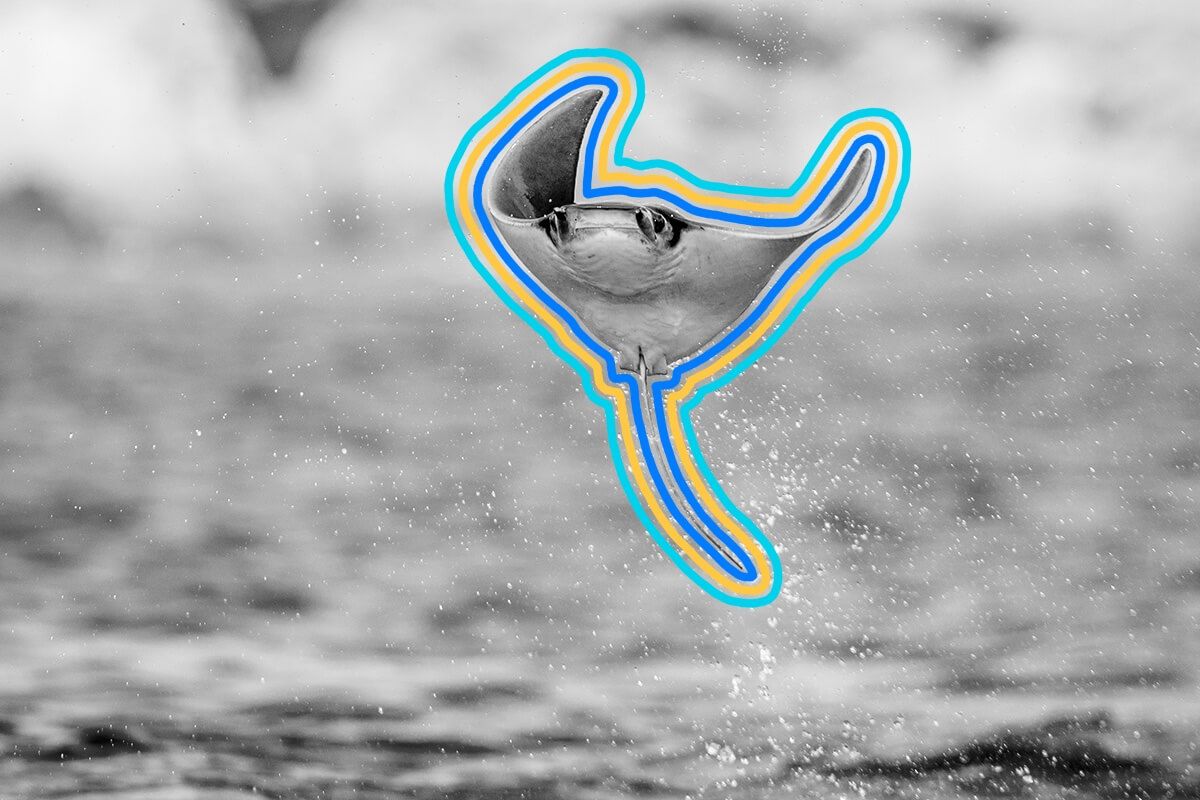

It’s a bird, it’s a plane, it’s a ... flying tree snake? Yes, that’s correct. From flying fish to flying squirrels, there are plenty of unique aerodynamic animals around the world. Even more impressive, most of them don’t have wings. Using special fins, large toes, or extra membranes, several surprising creatures are able to glide through the air at astonishing lengths.
Flying Fish

Although the concept of an airborne fish seems counterintuitive, there are at least 40 different flying fish species around the world. Primarily found in warmer climates in the Atlantic, Pacific, and Indian Oceans, these ray-finned fish thrive in open waters, where they can use their large, rigid fins to “fly” through the air. After propelling themselves out of the water, their fins extend horizontally like wings, allowing them to glide up to 650 feet. Most researchers believe flying fish developed this ability in order to escape underwater predators who did not exhibit the same aerodynamic capabilities.
Paradise Tree Snake

Found throughout Southeast Asia, the paradise tree snake is a unique reptilian predator. Sometimes referred to as the paradise flying snake, this species of serpent is both slim and agile. A highly capable climber, paradise tree snakes prefer to spend most of their time in coconut palm trees. When the flying snake wants to travel between treetops, it is able to flatten its ribcage until it becomes concave. At this point, the snake can propel itself out a tree and glide through the air, slithering in an S-shape as if on the ground.
Mobula Ray

Often called flying rays for their ability to leap out of the water, Mobula rays are a species of fish that are closely related to sharks. Shaped like a diamond, Mobula ray fins are useful both in and out of the water. With enough speed, the ray can launch six feet into the air, flapping its fins like wings before flopping back down. Often flying in groups, a school of Mobula rays is a spectacular sight to see. Scientists are unsure why flying rays exhibit this behavior, although it may be a form of communication between members of the species.
Flying Squirrel

Flying squirrels aren’t able to take flight like a bird, although they may give off this appearance as they soar through the air. The extra flap of skin that connects their front and hind legs serves as a parachute for these quirky land mammals. When a flying squirrel leaps into the air, they use this special membrane to glide from tree to tree, thereby avoiding any predators who may be on the ground. Not only can flying squirrels travel up to 150 feet in the air, but they can also change both their speed and direction in flight by steering with their legs and braking with their tails.
Crab Spider

If they weren’t already frightening enough, many spiders have the ability to fly. This is thanks to a common arachnid technique called ballooning. Ballooning occurs when a spider releases its silk and rides the wind like a kite. In this way, spiders can travel long distances to join a new colony, find food, or search for prospective mates. Crab spiders, in particular, have been researched for this ability; one study completed at the Technical University of Berlin revealed that crab spiders are “careful, deliberate fliers,” who use their hairs on their legs to test wind conditions before take-off.
Bats

As the only mammals in the world born with the ability to fly — and the only animal on this list with wings — bats are some of the most intriguing fliers out there. Their ability to use echolocation to find objects in the dark, for example, has been researched for decades. As fliers, bats are maneuverable and nimble. In fact, the flexible skin and extra joints on a bat’s wings make them more efficient in the air than birds.
Wallace’s Flying Frog

Sometimes referred to as parachute frogs, Wallace’s flying frogs live in tropical rainforests in Malaysia and Borneo. Named after 19th-century naturalist Alfred Russel Wallace, the Wallace flying frog has a distinct appearance — gigantic webbed feet, boggling eyes, and an oversized mouth. When escaping a predator, this flying frog can glide up to 50 feet through the air, using its extra membranes as a parachute. Flying from tree to tree, the frog’s gigantic toe pads provide an adhesive cushioning that allows them to stick the landing with ease.
